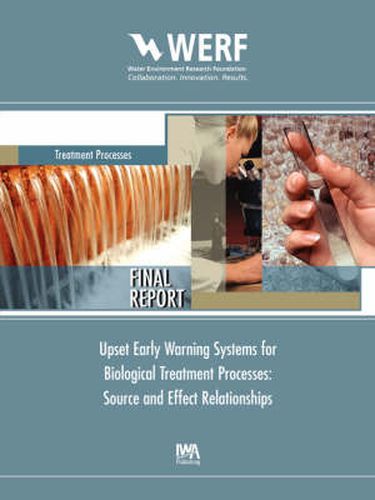Readings Newsletter
Become a Readings Member to make your shopping experience even easier.
Sign in or sign up for free!
You’re not far away from qualifying for FREE standard shipping within Australia
You’ve qualified for FREE standard shipping within Australia
The cart is loading…






A laboratory study was conducted to elucidate the source-effect relationships for seven chemicals (sources) that can cause activated sludge process upset (effect). These chemicals were studied over a range of concentrations using both nitrifying and non-nitrifying laboratory-scale activated sludge sequencing batch reactors. Effects were characterized according to traditional methods of evaluating process effluent and mixed liquor quality. A range of process effects were observed for both biomass sources. Overall impact was assessed and the degree to which a chemical caused an impact on process performance was considered to be more detrimental than if a chemical had multiple process effects that were moderate. The order in which chemicals caused adverse effects for the nitrifying biomass was: ammonium < octanol < DNP < cyanide < CDNB < cadmium - pH 11. For the non-nitrifying biomass, the order in which the chemicals caused adverse effects was: octanol < ammonia < DNP < cyanide < CDNB < cadmium < pH 11. Almost all chemicals caused multiple process effects, but the intensity and type of process effect was not always predictable based on the chemical applied. The findings show that there are multiple ways that chemicals can impact activated sludge plants, and suggest that corrective action practices need to be tailored based on the nature of the chemical causing the upset. This publication can be purchased and downloaded via Pay Per View on Water Intelligence Online - click on the Pay Per View icon below
$9.00 standard shipping within Australia
FREE standard shipping within Australia for orders over $100.00
Express & International shipping calculated at checkout
A laboratory study was conducted to elucidate the source-effect relationships for seven chemicals (sources) that can cause activated sludge process upset (effect). These chemicals were studied over a range of concentrations using both nitrifying and non-nitrifying laboratory-scale activated sludge sequencing batch reactors. Effects were characterized according to traditional methods of evaluating process effluent and mixed liquor quality. A range of process effects were observed for both biomass sources. Overall impact was assessed and the degree to which a chemical caused an impact on process performance was considered to be more detrimental than if a chemical had multiple process effects that were moderate. The order in which chemicals caused adverse effects for the nitrifying biomass was: ammonium < octanol < DNP < cyanide < CDNB < cadmium - pH 11. For the non-nitrifying biomass, the order in which the chemicals caused adverse effects was: octanol < ammonia < DNP < cyanide < CDNB < cadmium < pH 11. Almost all chemicals caused multiple process effects, but the intensity and type of process effect was not always predictable based on the chemical applied. The findings show that there are multiple ways that chemicals can impact activated sludge plants, and suggest that corrective action practices need to be tailored based on the nature of the chemical causing the upset. This publication can be purchased and downloaded via Pay Per View on Water Intelligence Online - click on the Pay Per View icon below